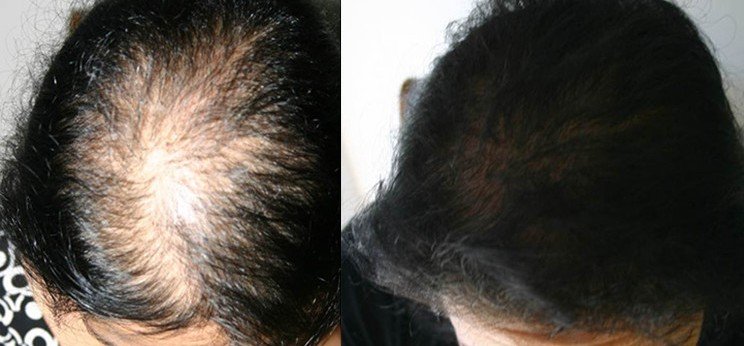
MALE AND FEMALE HAIR LOSS
WHAT IS MALE HAIR LOSS?
Male pattern baldness refers to a loss of hair on the scalp in men. It happens as hormone levels change over a man’s lifetime, and especially in the later years. Although a natural part of the aging process for millions of men, hair loss can be psychologically distressing. Sudden or unexpected hair loss can sometimes indicate a more serious health condition that may need medical attention.
Fast facts on male pattern baldness
- Male pattern baldness, or androgenetic alopecia, typically occurs later in life as a result of changing hormone levels.
- Hair loss can be psychologically distressing for men, and they may seek a variety of treatments.
- Other causes of hair loss include nutritional deficiencies, infections, and some psychological conditions.
- Treatments include medications, laser and light therapies, and hair transplantation.
CAUSES
Men normally lose their hair when three main factors interact: genetics, age, and hormones. Also known as androgenetic alopecia, male-pattern baldness happens as hormone levels change over the course of a man’s life. Genetic factors also affect the likelihood of male-pattern baldness. These factors contribute to the gradual shrinkage of the tiny cavities in the skin at the base of hairs, known as scalp hair follicles. Hair grows progressively shorter and finer until no new hairs grow. Most white men develop some degree of baldness, according to their age and genetic makeup. Men with more first- and second-degree relatives who lose their hair have a higher chance of losing hair themselves.
TREATMENTS
Many men see hair loss as a natural part of growing older, and they do not perceive the need for treatment. However, hair loss can trigger negative psychological effects, such as low self-esteem. In some, it can contribute to depression. Some treatments are available that may help.
- Medication
- Transplantation
- Laser and light treatment
WHAT IS HAIR LOSS IN WOMEN?
Hair loss in women is just that—when a woman experiences unexpected heavy loss of hair. Generally, people shed from 50 to 100 single hairs per day. Hair shedding is part of a natural balance—some hairs fall out while others grow in. When the balance is interrupted—when hair falls out and less hair grows in—hair loss happens. Hair loss is different than hair shedding. The medical name for hair loss is alopecia. Many people think that hair loss only affects men. However, it is estimated that more than 50% of women will experience noticeable hair loss. The most significant cause of hair loss in women is female-pattern hair loss (FPHL).
WHAT CAUSES HAIR LOSS?
Your age matters when it comes to causes. The most common reasons for hair loss in younger people are different from those in older people. Whatever your age, identifying the cause and addressing it early is important.
Hair loss in your 20s and 30s: Stress, Dieting, Hormonal changes
Hair loss in your 40s and 50s: Genetics, Menopause, Hair styling
Hair loss in your 60s and beyond: Ageing, Medical conditions, Medications
Hair loss in all ages
Although certain causes of hair loss might be more common at specific times of life, many of them can happen at all ages. For example, hormone imbalances, infections, vitamin deficiencies, and autoimmune diseases affect women of all ages — and these may lead to hair loss. There are also rare inflammatory conditions that cause permanent damage to hair follicles.
TREATMENTS
Any medical conditions that lead to hair loss should be treated directly to address the full condition, not just its symptoms. That said, there are a number of possible medications and treatments for hair loss caused by female pattern baldness and other alopecia’s. You may need to use one or a combination of treatments for months or years to see the full results.

